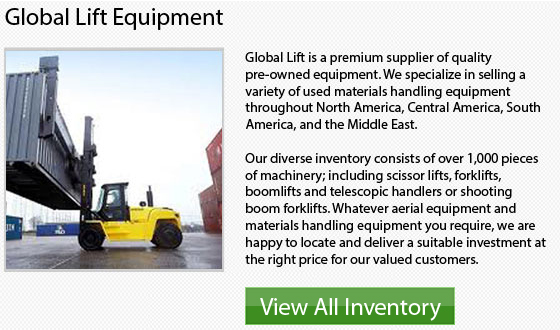
Warehouse Forklift Types
The type of multi-purpose machine which could be used both indoors and outdoors are forklifts. They are capable of functioning on rough terrain and are a common piece of industrial equipment found inside warehouses or on construction sites. Any warehouse forklift normally just needs to be utilized on flat surfaces for most of their work scopes.
There are different classes of forklifts. Lower classes of forklifts are utilized in warehouses and higher classes are utilized more often in outdoor applications and are considered to be sturdier.
Classes of Forklifts
Amongst 7 classes of forklifts, there are 4 kinds of warehouse forklifts. The classes 5 to 7 usually describe forklifts which are utilized to tow heavy loads or operate outside on rough surfaces. Classes 1 to 3 are great for indoor use because they use electric propulsion. Class 4 forklifts rely on internal combustion or IC power. These models can be used indoors but due to the fumes they create, are suitable for open air warehouse operation. You would rarely find these kinds of forklifts in strictly indoor environments.
Class One Forklifts
Class 1 forklifts could be divided into 4 lift codes or subcategories. The lift codes are described as six, five, four and one. The forklift operator stands up in a lift code 1 forklift. In lift codes 4 through 6, he sits down. To be able to differentiate between the latter three, lift code 4 forklifts have 3 wheels, while lift code 5 forklifts use cushion tires. Lift code 6 forklifts have pneumatic tires.
A term used for Class 2 forklifts is narrow aisle forklifts. These kinds of forklifts are used in tight spaces and operated by a standing rider. They are great for spaces that are too small for a sit-down rider forklift. Electric hand trucks or class 3 forklifts could also fit into tighter spaces. The operator for class 3 either stands or walks behind the machine, depending on the specific model. Lift models are able to lift pallets and loads several feet off of the ground.
Electrical Forklifts
Usually, electrical forklifts are utilized in warehouses as opposed to internal combustion or IC engine forklifts. There are several advantages and disadvantages to electrical models. For start, they are environmentally friendly and can last longer. They cost less to operate and cut down greatly on noise pollution. On the downside, they do not function well outdoors in bad weather, are more expensive up front and most models require charging every 6 hours. For apparent reasons, electrical-powered forklifts are an ideal choice for indoor areas and warehouses most of the time.